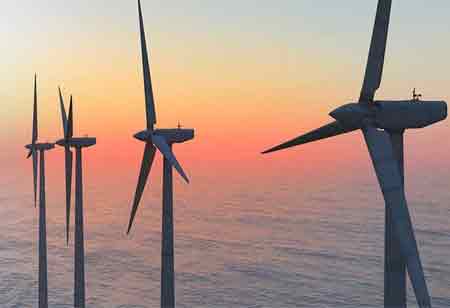Thank you for Subscribing to Energy Business Review Weekly Brief
A complete Guide to Refinery Equipment
A refinery is an industrial facility that houses the many pieces of machinery needed to convert crude oil from petroleum into a variety of useful byproducts.

By
Energy Business Review | Tuesday, April 04, 2023
Stay ahead of the industry with exclusive feature stories on the top companies, expert insights and the latest news delivered straight to your inbox. Subscribe today.
A refinery is an industrial facility that houses the many pieces of machinery needed to convert crude oil from petroleum into a variety of useful byproducts. Petroleum and natural gas must first be extracted from the earth's crust using highly advanced gear in order for this process to begin.
Fremont, CA: A refinery is an industrial facility that houses the many pieces of machinery needed to convert crude oil from petroleum into a variety of useful byproducts. Petroleum and natural gas must first be extracted from the earth's crust using highly advanced gear in order for this process to begin. Chemical procedures and physical chemistry approaches can be used to refine oil and gas. Which of the procedures is best will depend on the equipment that is available, the quality of the crude oil, and the intended use of the refined oil. Petroleum (petrol), asphalt base, diesel fuel, heating oil, liquified petroleum gas (LPG), petrochemical feedstocks, and many other byproducts are some of the ones that are extracted from crude oil.
Why Performance Oil Refinery Machines are Necessary
All technology advancements are made solely to address problems or improve performance. A refinery's performance will be improved by setting up the proper machinery, which will also assist resolve any problems that can emerge from using outdated equipment.
For Proper Storage of Oil Produce
The right tank facilities must be installed in a refinery in order to hold raw materials and finished goods. When there are enough tanks in the refinery, crude oil may be conveniently moved from the oil well into the requisite tank for processing at the same time, allowing for a continuous flow of operation. Compared to crude oil itself, more tanks must be provided for intermediate processing and final goods. Due to their propensity to be more volatile and contain a lot of pressure, extra tanks must be provided for processed and finished products to avoid disruption in the supply chain during times of maintenance.
To Expel Toxic Hydrocarbon
Oil refineries use flares, which are constructed in the shape of a tall stack with flames burning at the top, to expel hydrocarbons, a vital procedure. Because to the explosive potential of volatile hydrocarbons when exposed to air, this device is crucial for plant safety. All harmful substances must be flushed out of all equipment after a machine failure or shutdown in order for it to be maintained. A closed piping system is used in flares to help transport all hazardous hydrocarbons to the flare site, where they are carefully monitored as they burn away.
To Facilitate Bulk Transportation
The construction of ocean-going tankers and a system of pipelines has made it possible to transport bulk goods with ease. Refineries were made possible by ocean-going tankers. Refineries were able to be situated further from oil fields and closer to market locations thanks to ocean-going tankers. Since then, deepwater ports have been built in a few places to connect pipelines to significant refineries.
To Conduct Thermal Energy between Two Media
Thermal energy is a necessity for processing products in every refinery, but especially in the cracking unit where oil and water are separated. But, if it is not adequately regulated, it can cause significant harm to delicate machinery and control systems. For this reason, a heat exchanger machine is necessary. The main purposes of the heat exchanger, which is a thermo-regulation device, are to disperse surplus heat and control temperature during processing. The liquid or gas being processed is the first media, and the heat-absorbing coolant, which is composed of chilled gas or liquid.






